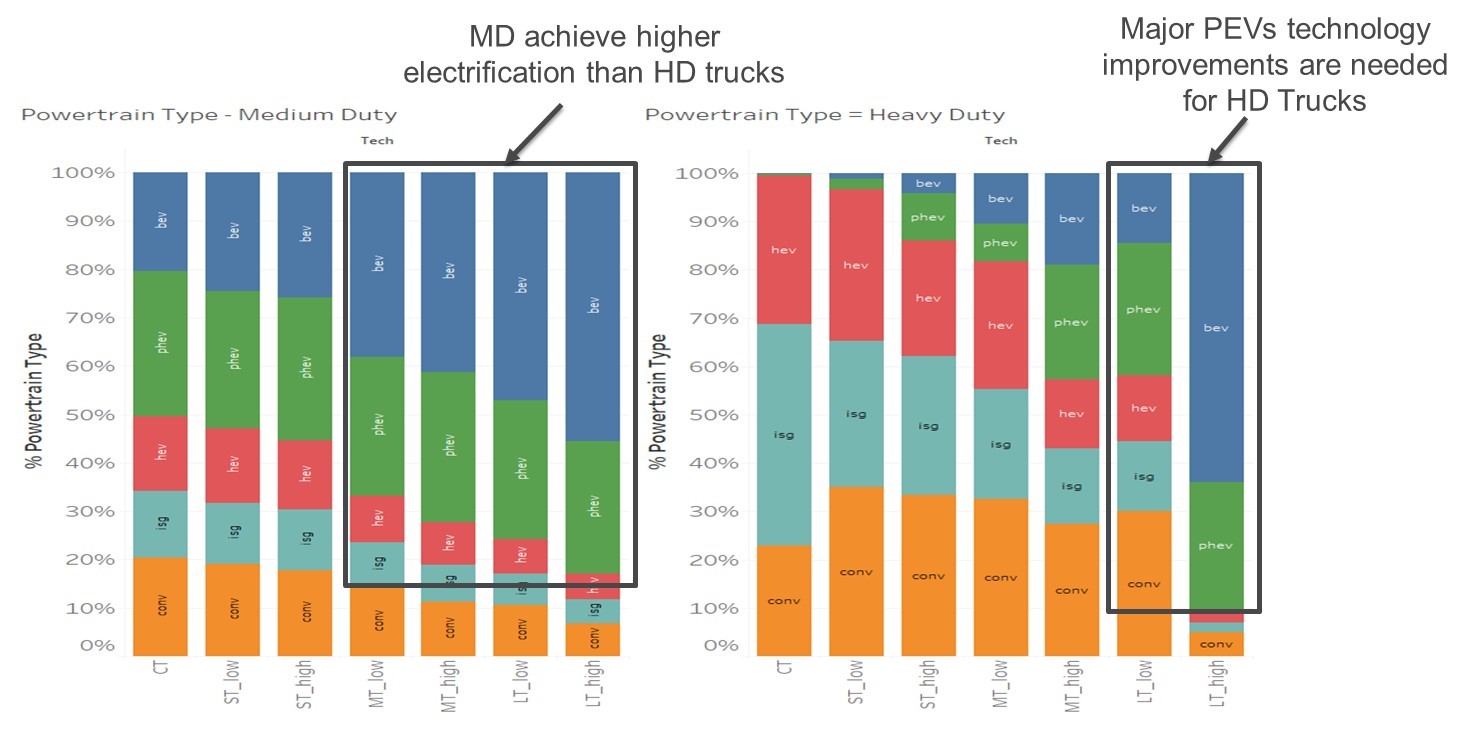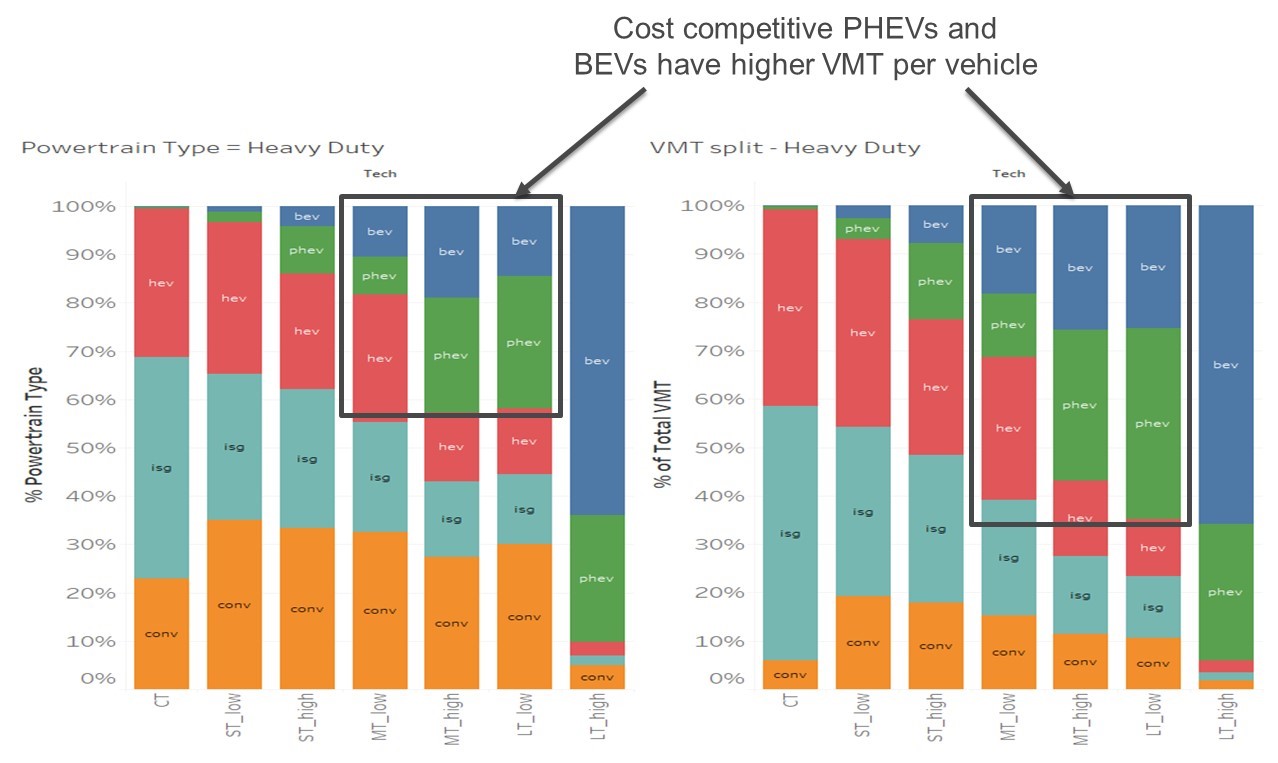Freight Powertrain Penetration
Published: 2022 January
Discover optimum powertrain fleet distribution for freight across the Chicago metropolitan area.
The impact of advanced vehicle technologies on energy consumption and cost depends considerably on vehicle usage. While most studies consider standard cycles (e.g., highway fuel economy cycle [HWFET] and urban dynamometer driving schedule [UDDS] in the United States) only a few representative real-world driving cycles consider the diversity of vehicle usage currently, as well as in the future, based on connectivity, automation, and new modes, factors required to understand where each technology fits best from a total cost of ownership (TCO) perspective.
The U.S. Department of Energy (DOE) Systems and Modeling for Accelerated Research in Transportation (SMART) Mobility workflow represents a wide set of scenarios. As part of the process, POLARIS, a high-fidelity predictive transportation system model, was used to generate routes and SVTrip was employed to generate stochastic vehicle speed profiles. These are then are used by Autonomie EXPRESS to estimate energy consumption and cost.
The energy consumption for each vehicle and duty cycle is determined using five different powertrains (conventional, mild and full hybrid, plug-in hybrid, and electric), and TCO is then calculated based on vehicle miles travelled (VMT), vehicle purchase price, and energy price. The powertrain providing the lowest TCO is then selected.
When considering medium- and heavy-duty truck applications across the Chicago metropolitan area, it is evident that although the market penetration of electrified powertrains significantly increases over time, the fleet distribution consistently remains a mix of all powertrains considered. Additionally, high technology progress (e.g., a rapid decrease in battery cost) is required to achieve significant battery electric vehicle (BEV) penetration, especially for heavy duty applications.
 CT (Current Technology), ST (Short Term), MT (Medium Term), LT (Long Term); low (Low technology progress), high (high technology progress)
CT (Current Technology), ST (Short Term), MT (Medium Term), LT (Long Term); low (Low technology progress), high (high technology progress)
One of the main factors influencing the technology impact is VMT. As shown below, it is critical for advanced technologies to drive long distances to offset the initial purchase cost.

For more information, you can read and download the Assessing Vehicle Technologies Benefits in a Transportation Energy Ecosystem report.